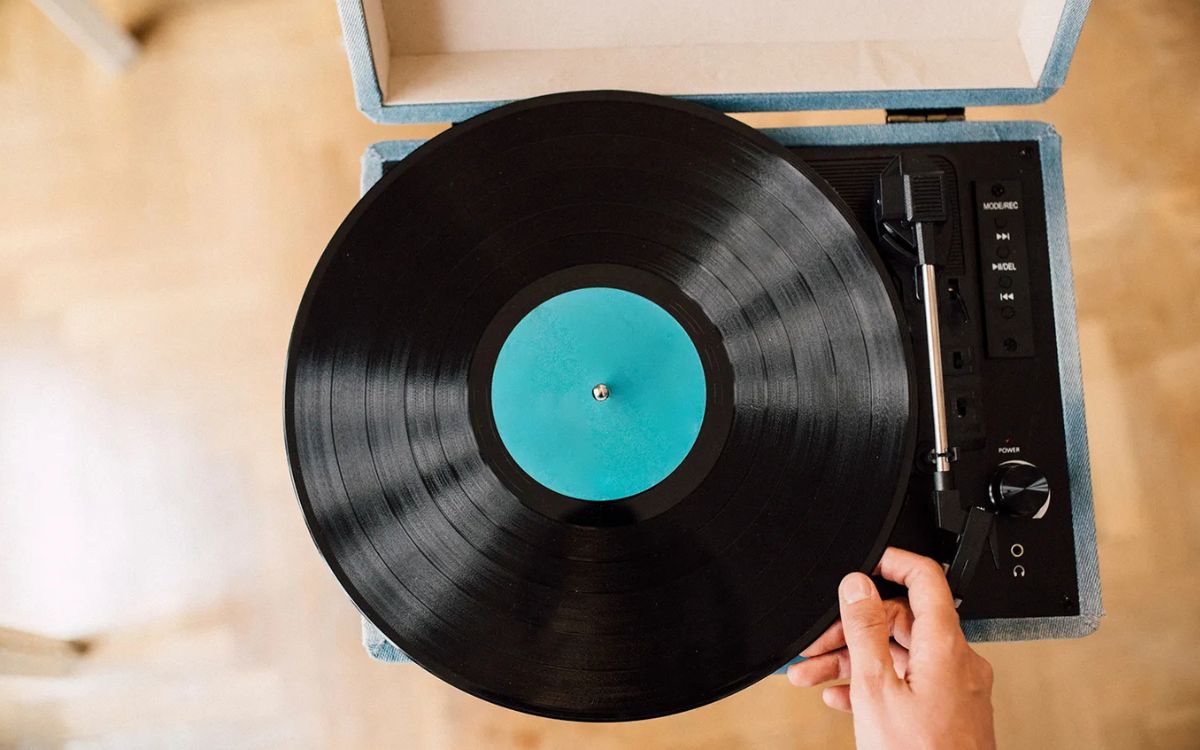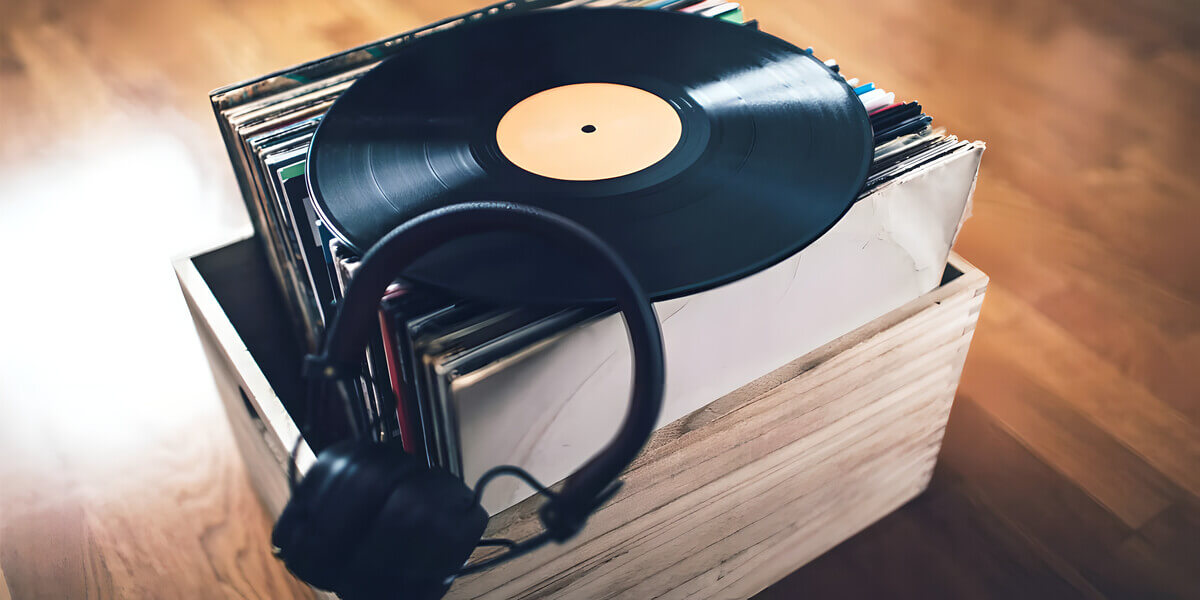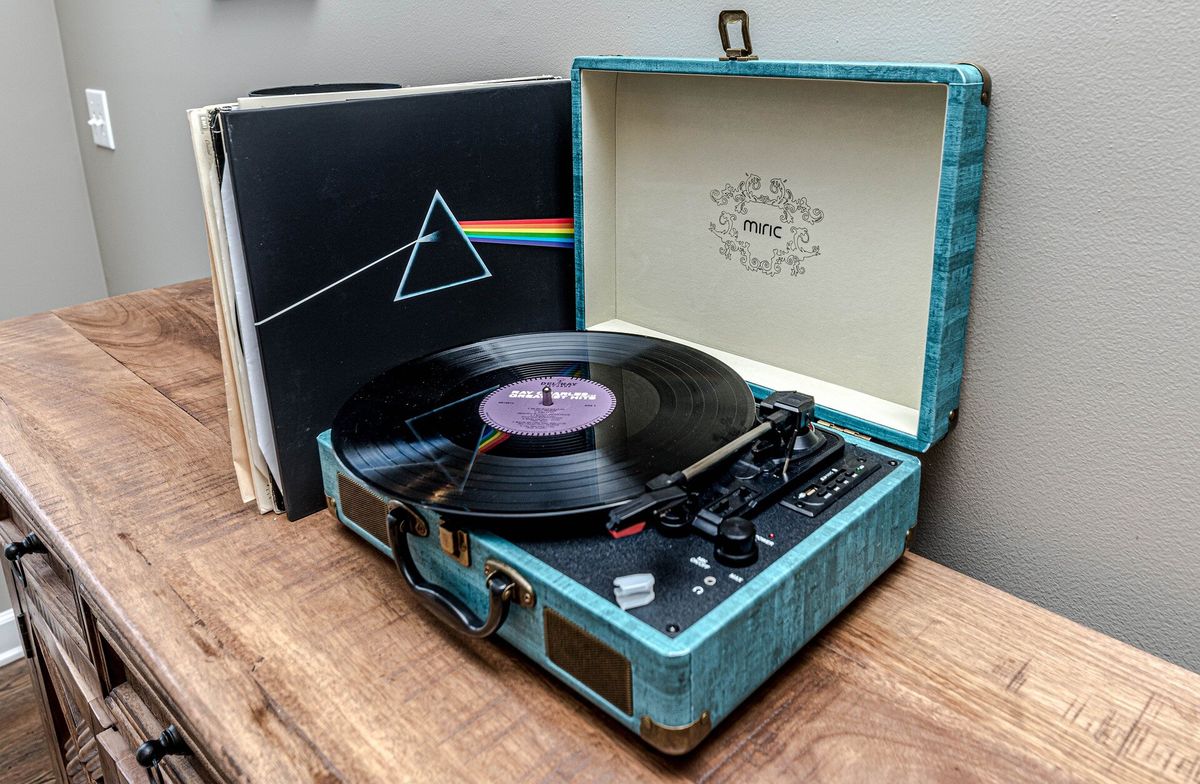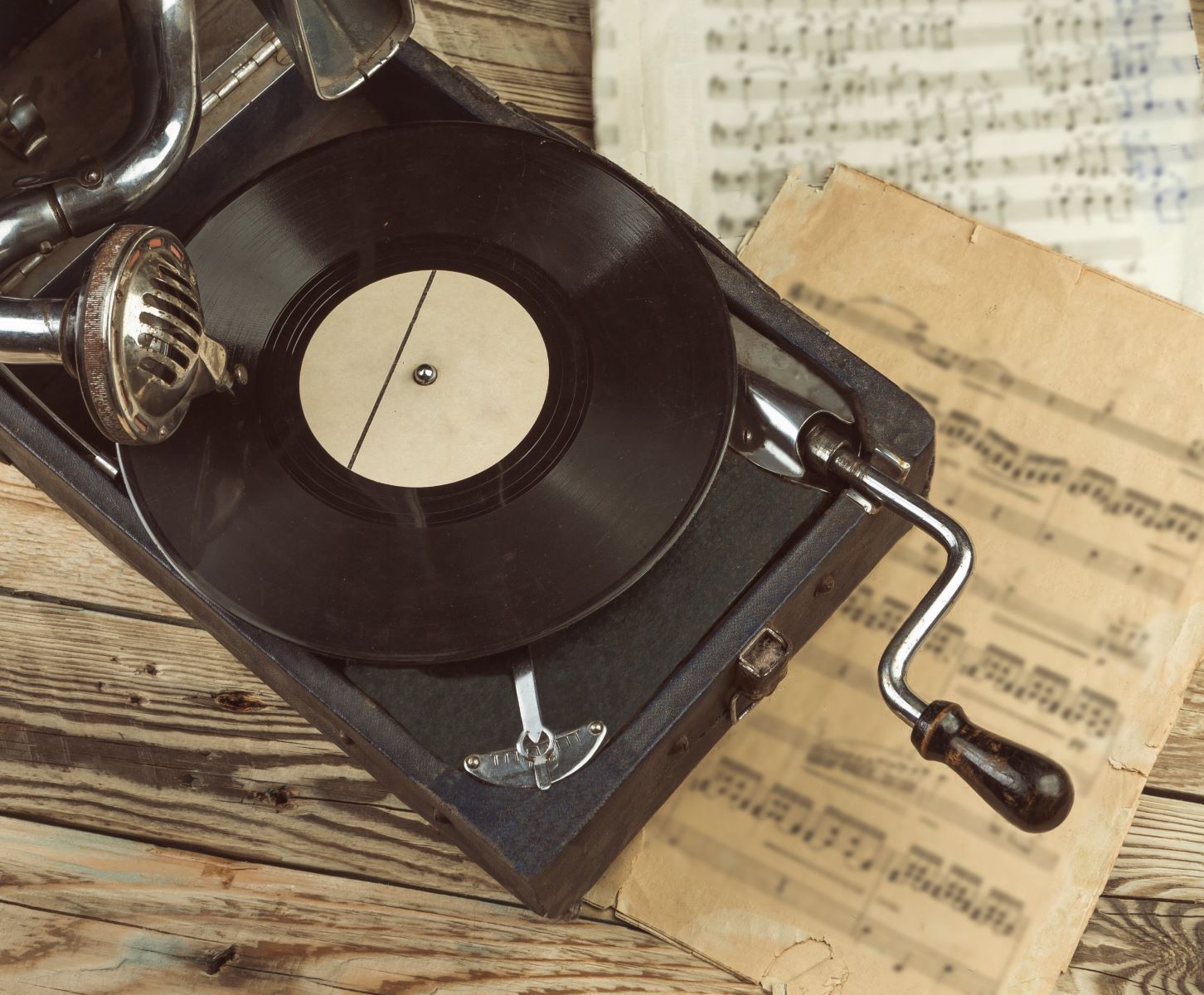Home>Production & Technology>Vinyl>What Vinyl Music Records Are Worth Money Today From The 1970s
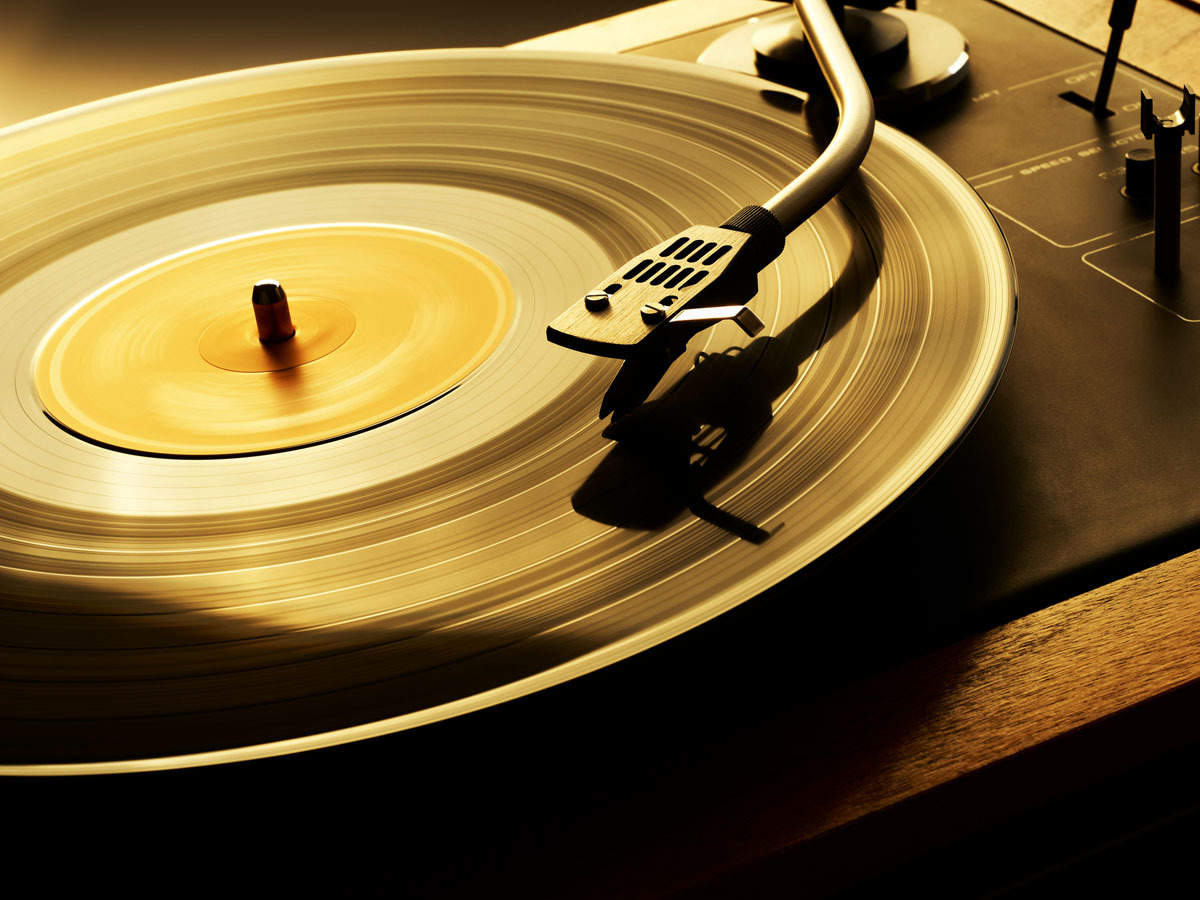

Vinyl
What Vinyl Music Records Are Worth Money Today From The 1970s
Modified: January 22, 2024
Discover the value of vinyl music records from the 1970s. Find out which vinyl records are worth money today. Vinyl enthusiasts, this is for you!
(Many of the links in this article redirect to a specific reviewed product. Your purchase of these products through affiliate links helps to generate commission for AudioLover.com, at no extra cost. Learn more)
Table of Contents
- Introduction
- Factors that Determine the Value of Vinyl Records
- Popular Vinyl Records from the 1970s
- Notable Artists and Albums from the 1970s
- Rarity and Collectability of Vinyl Records
- Condition and Grading of Vinyl Records
- Pricing and Valuation of Vinyl Records
- Tips for Buying and Selling Vinyl Records
- Conclusion
Introduction
Welcome to the world of vinyl music records, a beloved format that has captivated music enthusiasts for decades. While digital music has become the norm in the modern era, there is a timeless charm and authenticity associated with vinyl records that continues to hold a special place in the hearts of music lovers.
When it comes to vinyl records from the 1970s, there is a unique allure and a potential for significant value. This was a decade marked by groundbreaking music, diverse genres, and iconic artists who shaped the landscape of popular music. From rock legends to soulful crooners, the 1970s produced a wealth of exceptional albums that are now highly sought after by collectors.
In this article, we will explore the factors that determine the value of vinyl records, delve into some popular records from the 1970s, and provide valuable insights into the rarity, collectability, and grading of vinyl records. Whether you are an avid collector looking to expand your collection or a novice music enthusiast curious about the world of vinyl, this article will serve as a comprehensive guide to understanding the value of vinyl records from the 1970s.
Factors that Determine the Value of Vinyl Records
Several factors come into play when determining the value of vinyl records, especially those from the 1970s. It’s important to consider these factors before buying or selling vinyl albums to ensure you are making informed decisions. Here are some key factors that influence the value of vinyl records:
- Rarity: The scarcity of a vinyl record is one of the primary drivers of its value. Limited edition releases, promotional copies, or albums that were only pressed in small quantities can significantly increase a record’s desirability and, consequently, its value.
- Artist and Album Popularity: The popularity and influence of the artist or band behind a vinyl record can greatly impact its value. Albums from renowned artists who had a significant impact during the 1970s, such as Led Zeppelin, Pink Floyd, or The Rolling Stones, tend to be highly sought after by collectors.
- Condition: The condition of a vinyl record and its cover plays a crucial role in determining its value. Records in excellent condition, with no scratches or warping, are more valuable than those with visible signs of wear and tear. Similarly, album covers should be free of tears, stains, or excessive damage.
- Original Pressings: The desirability and value of a vinyl record can increase if it is an original pressing, especially if it has unique features like original inserts or bonus material. First pressings often have better sound quality and a more authentic feel, making them highly sought after by collectors.
- Genre: The genre of music can also influence the value of a vinyl record. Certain genres, such as rock, soul, funk, and jazz, have historically been popular among collectors and tend to command higher prices in the market.
It’s important to note that while these factors can contribute to a vinyl record’s value, the market can be subjective, and trends may fluctuate over time. Additionally, factors like cultural significance, historical context, and regional variations can also impact the value of vinyl records. Keeping a pulse on the market and consulting with experts can help you make more informed decisions when buying or selling vinyl records.
Popular Vinyl Records from the 1970s
The 1970s was a decade of remarkable musical creativity, diverse genres, and iconic artists. From rock and roll to disco, this era produced numerous albums that are considered classics and highly coveted by collectors. Here are some popular vinyl records from the 1970s:
- Pink Floyd – The Dark Side of the Moon: Released in 1973, this album is a masterpiece of progressive rock. Known for its iconic cover art and immersive soundscapes, it remains one of the best-selling and most influential albums of all time.
- David Bowie – The Rise and Fall of Ziggy Stardust and the Spiders from Mars: Bowie’s 1972 album introduced the world to his otherworldly alter ego, Ziggy Stardust. With its blend of glam rock and lyrical genius, this album serves as a quintessential representation of Bowie’s artistic brilliance.
- Led Zeppelin – IV: Commonly referred to as “Zoso,” this 1971 album solidified Led Zeppelin’s status as rock gods. Featuring timeless hits like “Stairway to Heaven” and “Black Dog,” it remains a staple in the rock music canon.
- The Jackson 5 – ABC: Released in 1970, this album showcased the prodigious talent of the Jackson 5, fronted by a young Michael Jackson. With catchy tunes like “ABC” and “I Want You Back,” it became an instant hit and solidified the group’s legacy in pop music.
- Fleetwood Mac – Rumours: This 1977 album is a masterpiece of soft rock and is known for its raw and emotionally charged songs. From the passionate “Go Your Own Way” to the hauntingly beautiful “Dreams,” Rumours remains one of the best-selling albums of all time.
- Stevie Wonder – Songs in the Key of Life: Released in 1976, this double album showcased Stevie Wonder’s musical genius and versatility. With its blend of soul, funk, and jazz influences, and profound lyrics, it is widely regarded as one of Wonder’s greatest achievements.
These are just a few examples of popular vinyl records from the 1970s. There are countless other albums from this decade that have left an indelible mark on music history and continue to be highly sought after by collectors. Whether you’re a fan of rock, pop, funk, or soul, the 1970s offers a treasure trove of iconic albums waiting to be discovered on vinyl.
Notable Artists and Albums from the 1970s
The 1970s was a golden era for music, producing an incredible array of talented artists and groundbreaking albums. From rock legends to soul sensations, this decade gave birth to timeless classics that continue to resonate with audiences today. Here are some notable artists and albums from the 1970s:
- The Rolling Stones – Exile on Main St: Released in 1972, this double album is widely regarded as one of The Rolling Stones’ greatest works. With its fusion of rock, blues, country, and gospel, it showcases the band’s versatility and raw energy.
- Aretha Franklin – Young, Gifted and Black: This 1972 album solidified Aretha Franklin’s status as the Queen of Soul. With powerful tracks like “Rock Steady” and her iconic rendition of “Respect,” Franklin’s soulful vocals shine throughout the record.
- Elton John – Goodbye Yellow Brick Road: Released in 1973, this album propelled Elton John to superstardom. With hits like “Bennie and the Jets” and “Candle in the Wind,” it showcased John’s talent for crafting catchy melodies and poignant lyrics.
- Bob Marley and the Wailers – Exodus: Released in 1977, this album catapulted reggae music to international fame. With its infectious rhythms and powerful messages of unity and freedom, it remains one of Marley’s most beloved and influential works.
- Queen – A Night at the Opera: This 1975 album marked Queen’s emergence as a force to be reckoned with in the rock world. Featuring the iconic anthem “Bohemian Rhapsody,” it showcased the band’s theatricality and innovative sound.
- Carole King – Tapestry: Released in 1971, this album is a masterclass in songwriting and storytelling. With heartfelt tracks like “It’s Too Late” and “You’ve Got a Friend,” King’s introspective lyrics and soulful voice resonated with listeners worldwide.
These are just a few examples of the notable artists and albums from the 1970s. This transformative decade saw the rise of numerous influential musicians who pushed the boundaries of creativity and left an indelible mark on the music industry. Whether you’re a fan of rock, soul, pop, or reggae, there is no shortage of timeless albums to explore from this era.
Rarity and Collectability of Vinyl Records
When it comes to vinyl records, rarity is an essential factor in determining their collectability and value. The scarcity of a record can be influenced by various factors, including limited edition releases, regional variations, and specific pressings. Collectors often seek out rare vinyl records as they hold a unique appeal and become valuable additions to their collections.
One of the key elements contributing to a record’s rarity is its limited edition status. Limited edition releases are often produced in small quantities, making them highly sought after by collectors. These can include special colored vinyl, picture discs, or records with exclusive bonus content.
Another aspect that can impact the rarity of vinyl records is regional variations. Some albums may have been released in limited quantities in certain countries or specific markets, making them more difficult to find and therefore increasing their collectability. For example, certain albums by British artists may have had limited releases in the United States, making them rare finds for American collectors.
Specific pressings can also make a significant difference in a record’s rarity. Early pressings or first editions of albums tend to be more valuable due to their historical significance and often superior sound quality. These original pressings can include unique features such as inserts, posters, or special packaging, further adding to their collectability.
It’s important to note that rarity alone does not guarantee a high value for a vinyl record. Other factors like the condition of the record, demand from collectors, and the overall market trends influence its value as well. Additionally, certain genres or artists may have a dedicated fan base or niche following, which can drive up the demand and value of their records.
When it comes to collecting vinyl records, identifying and acquiring rare and collectible pieces can be an exciting and rewarding endeavor. However, it requires research, patience, and an understanding of the market. Keeping an eye on online marketplaces, record fairs, and connecting with fellow collectors can help you stay informed about rare releases and valuable additions to your vinyl collection.
Condition and Grading of Vinyl Records
The condition of a vinyl record plays a crucial role in determining its value and collectability. Collectors and buyers assess the condition of records based on certain grading standards to ensure they are getting the best quality possible. Here are the key factors and grading criteria used to evaluate the condition of vinyl records:
- Visual Inspection: The first step in assessing the condition of a vinyl record is to visually inspect it for any visible signs of wear or damage. This includes looking for scratches, scuffs, warping, and signs of heavy usage on both the vinyl disc and the album cover.
- Playability: The ability of a record to play without skipping, excessive surface noise, or distortion is an important factor in determining its condition. A record that plays well with minimal noise is considered to be in better condition than one with significant playback issues.
- Surface Quality: The surface quality of a vinyl record refers to the presence of scratches, scuffs, or marks that can affect the sound quality. Records in excellent condition have minimal surface imperfections, while heavily scratched or damaged records are considered to be in poorer condition.
- Sleeve or Cover Condition: The condition of the album cover, including the presence of tears, stains, or damage, is also taken into account when grading a vinyl record. A record with an intact and well-preserved cover is generally assigned a higher grade.
Grading systems such as the Goldmine Grading Scale or the Record Collector Grading System are commonly used to evaluate the condition of vinyl records. These grading systems assign a grade or condition rating to records, usually ranging from Mint (perfect condition) to Poor (heavily damaged).
When buying or selling vinyl records, it’s important to accurately describe the condition of the record using these grading systems. This ensures transparency and helps both buyers and sellers to make informed decisions. A record in better condition will generally command a higher price, while one in poorer condition may be sold at a lower price or considered for restoration purposes.
Proper storage and handling of vinyl records also play a crucial role in preserving their condition. Keeping records in protective sleeves, dusting them regularly, and storing them away from heat and direct sunlight can help prolong their lifespan and maintain their value.
By understanding the grading standards and assessing the condition of vinyl records accurately, collectors and buyers can make informed decisions and ensure they are adding high-quality records to their collections.
Pricing and Valuation of Vinyl Records
When it comes to determining the price and value of vinyl records, several factors come into play. Understanding these factors is essential for both buyers and sellers to ensure a fair and accurate valuation. Here are some key considerations when pricing and valuing vinyl records:
- Rarity and Demand: The rarity of a vinyl record and the level of demand from collectors can significantly impact its value. Limited edition releases, rare pressings, and albums from highly sought-after artists tend to command higher prices due to their scarcity and desirability.
- Condition: The condition of a vinyl record plays a vital role in its valuation. Records in excellent condition, with minimal scratches, warping, or damage, are generally more valuable than those in poor condition. Buyers are often willing to pay a premium for records in pristine or near-mint condition.
- Artist and Album Significance: The historical and cultural significance of an artist or album can affect its value. Albums that have had a profound impact on music or that represent a specific era or genre may be highly valued by collectors. Similarly, records from legendary artists or bands with dedicated fan bases tend to possess greater value.
- Market Trends: Like any other collectible, vinyl record values can fluctuate based on market trends. The popularity of certain genres, the emergence of new collectors, and shifts in musical tastes can influence the prices of specific records. Keeping an eye on market trends and consulting price guides can provide valuable insights into current valuation.
- Authentication and Provenance: Records with a well-documented history or provable authenticity may carry a higher value. This can include records with original signatures, records owned by famous individuals, or records with unique provenance that adds to their historical or cultural significance.
It’s important to note that pricing vinyl records can be subjective and influenced by individual preferences and market dynamics. Online marketplaces, record fairs, and consulting with reputable dealers or collectors can help in gaining a realistic understanding of the value of specific records.
When selling vinyl records, it’s essential to consider factors such as condition, rarity, and market demand to set an appropriate price. For buyers, conducting research, comparing prices, and assessing the condition of the record against its value is crucial to make informed purchasing decisions.
Ultimately, the value of a vinyl record is determined by the interaction between supply and demand in the marketplace. By understanding the factors that influence pricing and valuation, collectors and buyers can navigate the vinyl record market with confidence.
Tips for Buying and Selling Vinyl Records
Whether you are a vinyl enthusiast expanding your collection or looking to sell some records, here are some valuable tips to consider when buying and selling vinyl records:
- Research, Research, Research: Before making any purchase or listing a record for sale, conduct thorough research on the record’s value, condition, and market demand. Use online resources, price guides, and consultation with experts or fellow collectors to gather information and make educated decisions.
- Grading and Condition: Familiarize yourself with the grading standards for vinyl records to accurately assess their condition. Properly grade the records you plan to sell and ensure you are knowledgeable about any defects or issues that may affect their value.
- Verify Authenticity: When purchasing records with high value or historical significance, it’s important to verify the authenticity. Look for indicators such as original signatures, unique identifiers, or provenance documentation to ensure you are investing in a genuine item.
- Inspect Before Buying: If possible, inspect records in person before purchasing them. This allows you to examine the condition of the vinyl disc and album cover carefully. Look for any signs of damage, such as scratches or warping, and ensure the record is free from skips or excessive surface noise.
- Consider the Source: When selling or buying records, consider the credibility and reputation of the sellers or platforms involved. Buying from reputable record stores or sellers and using trusted online marketplaces can help ensure a smooth transaction and reduce the risk of counterfeit or misrepresented records.
- Connect with the Community: Engage with fellow collectors, join forums or online communities, and attend record fairs or local events. Networking with other vinyl enthusiasts can provide valuable insights, access to rare records, and potential buyers or sellers. It’s also an opportunity to share knowledge and passion for vinyl music.
- Take Care of Your Collection: Properly store and maintain your vinyl collection to preserve its value. Keep records in protective sleeves, store them in a cool and dry environment away from direct sunlight, and handle them with care to minimize the risk of damage.
Remember, buying and selling vinyl records should be an enjoyable and rewarding experience. Informed decision-making, attention to detail, and engaging with the vinyl community can enhance your overall journey as a collector or seller. Whether you are pursuing a specific album or looking to part with a record from your collection, these tips will help you navigate the vinyl market with confidence.
Conclusion
Vinyl records from the 1970s hold a special place in the hearts of music enthusiasts across the globe. These records not only capture the essence of the era but also represent the artistry and craftsmanship of timeless music. Understanding the factors that determine the value of vinyl records, such as rarity, condition, and demand, is essential for both buyers and sellers in the vinyl market.
From popular records like Pink Floyd’s “The Dark Side of the Moon” to iconic artists like David Bowie and Stevie Wonder, the 1970s produced a wealth of outstanding albums that continue to captivate audiences to this day. Collectors seeking to expand their collections or individuals looking to sell their vinyl records should take into account factors such as the condition, authenticity, and market trends to ensure fair and accurate pricing.
It is crucial for buyers to conduct thorough research, inspect records carefully, and verify authenticity before making a purchase. Similarly, sellers should accurately grade records, consider reputable selling platforms, and connect with fellow collectors to navigate the market successfully. By following these tips, collectors and sellers alike can make informed decisions, enhance their collections, and contribute to the vibrant vinyl community.
While digital music may dominate the current landscape, vinyl records from the 1970s reignite an appreciation for physical music formats and the precious nostalgia that comes with them. Their enduring popularity and collectability make vinyl records a cherished medium for music enthusiasts of all ages. So, dust off your turntable, delve into the world of vinyl, and let the timeless sound of the 1970s transport you to an era of musical brilliance.

